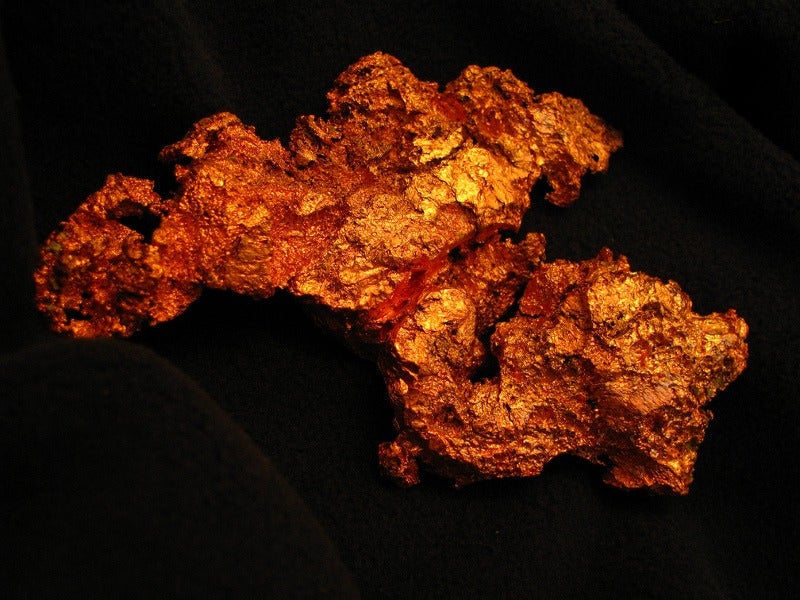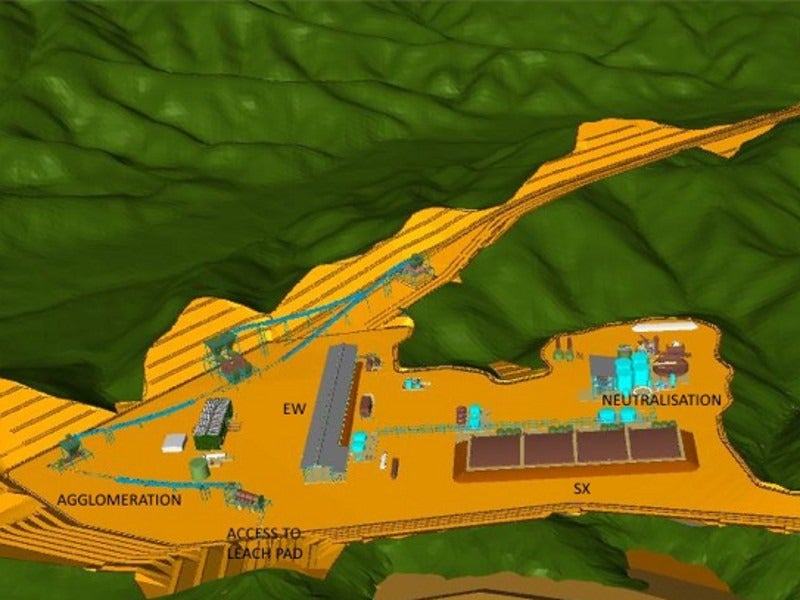Beruang Kanan Main (BKM) copper project is an open-pit mine being developed in the north-western region of Palangkaraya, Central Kalimantan. Asiamet Resources (ARS), previously known as Kalimantan Gold Corporation, owns and operates the BKM copper project.
The project development, including sustainment and closure, is estimated to cost approximately $172.5m.
Preliminary economic assessment (PEA) of the BKM project was completed in 2016, while the feasibility study and environmental impact assessment (EIA) were approved by the Government of Indonesia in March 2019.
The mine is estimated to produce 25,000 tons per annum (tpa) of copper cathode, through its anticipated mine life of eight years.
Beruang Kanan Main copper project location, geology, and mineralization
The Beruang Kanan Main copper project is located within contract of work area (CoW) of Kalimantan Surya Kanchana (KSK). The CoW is located approximately 190km north-west of Palangkaraya, Kalimantan.
The area hosts porphyry style copper-gold mineralization and is located in the mid-Tertiary age magmatic arc, hosting multiple epithermal gold deposits.
Copper-gold mineralization at KSK CoW is associated with multiple intrusions positioned at shallow crustal levels. Mesozoic metamorphic rocks are located to the south of the crustal levels, while accreted lower tertiary sediments are located to the north.
The project is made up of sheared and blocky sedimentary rocks and volcanics belonging to Cretaceous to tertiary age, which host the covellite, chalcocite, and chalcopyrite vein style copper mineralization.
Beruang Kanan Main copper project reserves
The NI 43-101-compliant measured, indicated, and inferred mineral resources of BKM were estimated to be 66.9 million tonnes (Mt), containing 950 million pounds (Mlbs) of copper, as of June 2017. The project is estimated to contain 431,000 tons (t) of copper.
Mining and processing of ore at BKM
Conventional open-pit mining method, involving drilling and blasting followed by truck and shovel, will be applied at the BKM copper project.
Major mining fleet will comprise 40t Caterpillar D8 bulldozers, 20t Caterpillar 14M motor graders, and 10 to 12t Caterpillar 988 front-end loaders.
BKM will produce Grade A (99.999%) copper cathode using heap leach and solvent extraction electro-winning method (SX-EW).
Run-of-mine ore will be crushed in a three-stage circuit crushing plant to obtain a P80 size of 8mm. It will then undergo agglomeration process, where the crushed leach feed inventory (LFI) fines will be mixed with larger fragments to maintain stabilization.
The agglomerated crushed LFI will be stacked in a radial stacker before being forwarded to the heap leaching unit. Raffinate will be used to irrigate LFI the solvent extraction plant (SX), while the pregnant leach solution (PLS) containing copper as well as iron and other impurities will be delivered to the SX Plant.
The resultant copper from the PLS will be transferred to the electrolyte, followed by electro-winning process to place copper onto the cathode mother plates.
Final copper will be stripped from the mother plates, bundled, and strapped for sale. It will be transported by road and landing craft tanks (LCT) to Banjarmasin port for shipment to clients.
Infrastructure facilities at Beruang Kanan Main (BKM) copper project
The copper project is proposed to be accessed from Palangkaraya and can also be reached through a river navigable by barge.
Power required by the project is proposed to be provided by a local power supply company from its liquefied natural gas-fired station through an 11kV overhead line.
Raw water required for the project will be collected from the Kasongan River and stored in stormwater control ponds and mining pit dewatering ponds.
Workers are proposed to be accommodated at the proposed 100-person accommodation camp.
Contractors involved
Orelogy Consulting prepared the PEA of the project with support from consultancies such as Hackman & Associates, Miller Metallurgical Services, DRA Pacific, and Lorax Indonesia.
Resindo Resources & Energy (RRE) prepared the bulk materials transport and logistics estimates for the project, along with associated capital and operating cost estimates.




